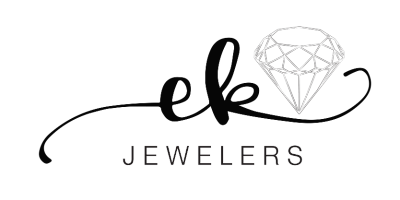Jewelry has always told stories. Stories of love, loss, celebration, and the people who wore each piece before it ever reached our hands. With our estate event happening April 24 and 25, it felt like the perfect time to take a little stroll through the past.
So how can you tell a Victorian piece from an Art Deco one?
Here’s a quick peek at a few of the eras that will be at our estate event and the unique styles that make them truly unforgettable.
Georgian (1714–1837)
Named after the reigns of Kings George I through IV, this period is known for handcrafted details, rose-cut diamonds, and foil-backed stones. Rare and full of antique charm, Georgian jewelry is hard to find and even harder to forget.
Victorian (1837–1901)
Named after Queen Victoria herself, this era is full of romance and sentiment. Expect mourning jewelry, lockets, and lots of symbolism! Styles ranged from simple and sweet to dark and dramatic, depending on the time period.

George W. Shiebler & Co. Bracelet, ca. 1880. Silver, 2 1/2 in. (6.4 cm).
The Metropolitan Museum of Art. https://jstor.org/stable/community.18416334.
Edwardian (1901–1915)
Elegant, airy, and all about lace-like filigree, Edwardian jewelry embraced platinum, diamonds, and feminine shapes. These pieces often have a delicate, bridal feel and are known for their craftsmanship and grace.
Art Deco (1920s–1930s)
A total vibe shift. Art Deco was bold and geometric. Expect clean lines, bright colored stones, and lots of contrast!

Tim Evanson, Tiffany and Co. Bracelets, ca. 1925–1930, photograph, Cleveland Heights, Ohio, USA, via Flickr, https://www.flickr.com/photos/timevanson/25893439588/.
Retro (1940s–1950s)
Big, bold, and gold. Retro jewelry often features chunky gold designs, dramatic curves, and colorful gems like rubies and aquamarines.
Cocktail & Mid-Century (1950s–1970s)
Cocktail rings and statement pieces came into style, with oversized gemstones, asymmetry, and designs meant to turn heads at every soirée.
Whether you're into timeless classics or bold throwbacks, it’s amazing how each piece reflects its moment in history. If you're as fascinated as I am, you're going to love EK's estate event.

